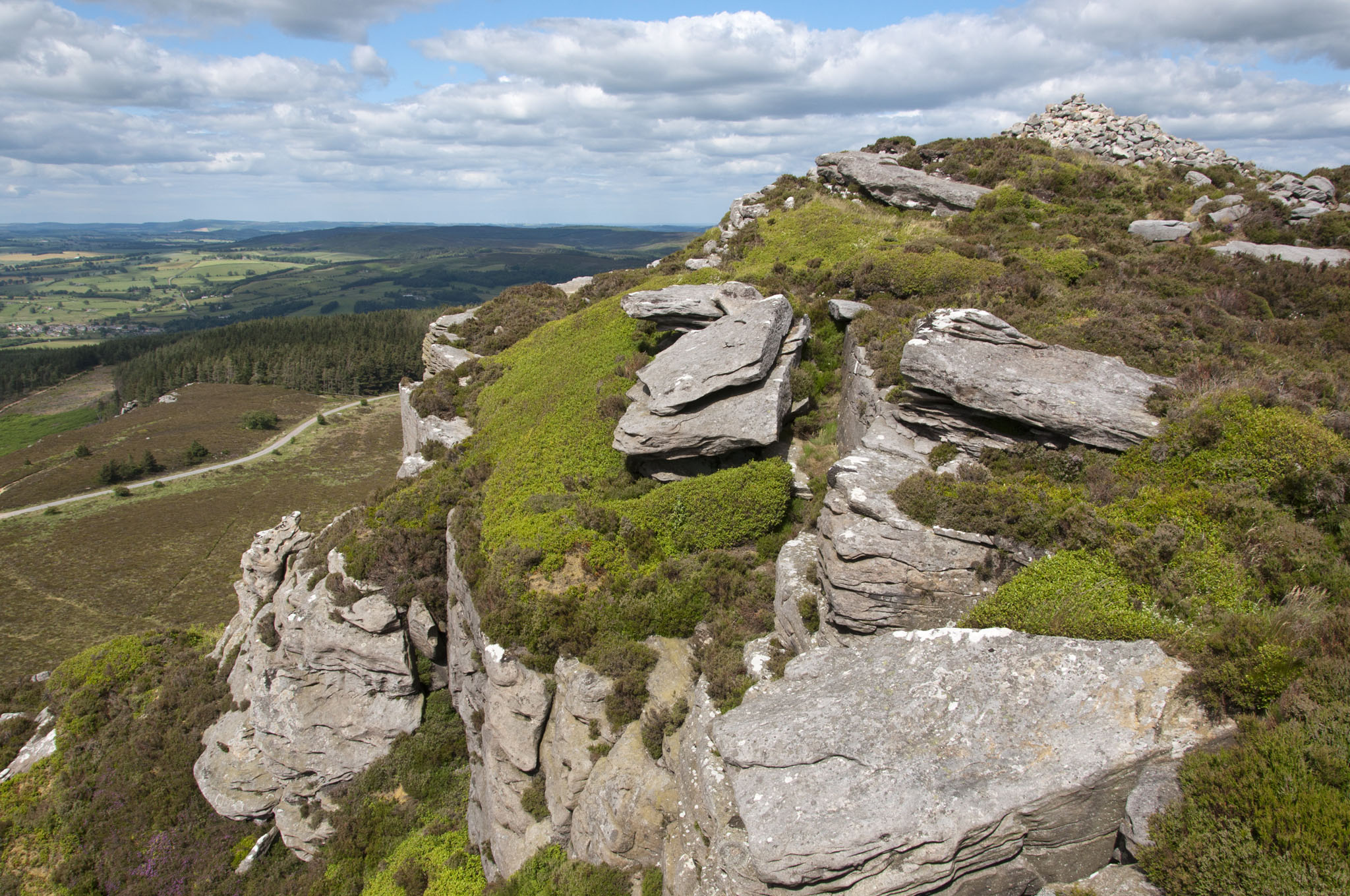Visiting Bronze Age cairns on the Simonside Hills, Northumberland
The Simonside Hills are a conspicuous range of hills and part of the watershed dividing Coquetdale from Tynedale to the south. Their distinctive profile can be recognised across great distances. I began this walk at Lordenshaw, an area of moorland which is known for cup and ring marks and a hillfort. My plan was to walk along the the ridge from The Beacon to the highest summit of Simonside. The area has a concentration of Bronze Age burial cairns.
Above: The remains of a Bronze Age cairn on The Beacon, the first site I visited while walking in a westerly direction along the Simonside ridge. The lower ground beyond is Lordenshaw, and in the distance is the North Sea (Photo: Aaron Watson, 2017)
Above: The cairn on The Beacon has been robbed out, creating a hollowed interior. The Cheviot Hills are beyond (Photo: Aaron Watson, 2017)
Above: The second cairn along the ridge is set within a shallow saddle to the west of The Beacon, which is visible on the skyline beyond (Photo: Aaron Watson, 2017)
Above: The third Bronze Age cairn on Dove Crag, looking towards the higher summits of the Simonside ridge beyond. This cairn has been disturbed, including the construction of the shelter visible to the left (Photo: Aaron Watson, 2017)
Above: Looking east from the Dove Crag cairn towards the prominent cairn upon The Beacon (Photo: Aaron Watson, 2017)
I have always been interested in how high ground enables distant areas of the landscape to be visibly connected. To the east of the Simonside Hills the North Sea was clear, while to the west the North Pennines form the distant horizon. On a clear winter day, with snow on the hills, I have clearly seen the Cheviot from Skiddaw in the Lake District, a distance of 112km (70 miles).
Above: The Simonside ridge cairns have immense views, here looking south west across the Tynedale to the distant North Pennines (Photo: Aaron Watson, 2017)
Above: The highest summit in the North Pennines, Cross Fell, is clearly visible in the centre of this image. It is 72 kilometres (45 miles) from the Simonside Hills (Photo: Aaron Watson, 2017)
Above: The Bronze Age cairn on Dove Crag is set just above these dramatic cliffs (Photo: Aaron Watson, 2017)
Above: The cairn on Dove Crag, visible on the skyline, was built in close proximity to unusual natural rock formations (Photo: Aaron Watson, 2017)
Above: The cairn on Dove Crag in its landscape context, with the North Sea beyond, as seen from further west along the Simonside ridge (Photo: Aaron Watson, 2017)
Above: The fourth cairn I visited along the Simonside ridge is also set upon a prominent summit just to the west of Old Stell Crag. It is in close proximity to outcropping sandstone and has steep ground and crags on several sides.
Above: According information supplied by Northumberland National Park, a lightning strike blasted this cairn apart (Photo: Aaron Watson, 2017)
Above: The fifth and final funerary cairn I visited is situated at 430m upon the summit of Simonside (Photo: Aaron Watson, 2017)
My walk had visited the highest Bronze Age cairns on the Simonside Hills. There are many similar monuments on lower ground nearby which do not have such spectacular views. Some of these cairns were investigated during land improvement works in the 19th century. They were found to contain stone-built cists, pottery vessels and human burials. Some burials had been cremated and the excavator, D.D. Dixon, commented at one site that reddened stones and soil under the cairn suggest that the cremation had taken place on the site.
This adds another dimension to the locations of the Simonside ridge cairns. These monuments were built in the most dramatic locations available. Many were associated with rock outcrops and nearby crags accentuate their height and proximity to the sky. Such associations must have been significant for people who chose to carry their dead to these locations. Finally, they command long-distance views. If the rite of cremation was performed upon these rocky summits, the pyre would have been seen burning brightly across a vast region of north-eastern England.












